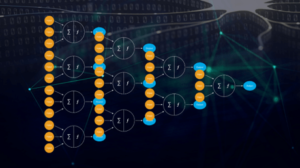Why does your technical lead want budget to add machine learning capabilities to your data processing and business intelligence operations? How will it help you fulfill your mission?
You probably have a general idea of what machine learning is. You know your organization has mountains of data and that you invest a lot of resources into mining it. Here, I’m going to briefly explain how machine learning can analyze your data better and give you useful, actionable information. It delivers knowledge — and it will make a huge difference in the effectiveness of your agency or company.
Four Important Machine-Learning Algorithms
Let’s start with the simplest definition of what machine learning is: a computer program analyzing data and using the data itself to alter its program. For example, when looking at an enormous data set, a program could start analyzing data, learn how to distinguish what’s relevant and irrelevant, and continue analysis using only relevant data. It “learns” based on human-written machine-learning algorithms. Here are four of them.
Linear Regression

This fairly simple type predicts future values from past values. Imagine tracking a hurricane: if data shows a storm has followed a particular direction, and you know how variables such as water and air temperature affect things, you can reasonably predict the storm’s future path. It’s not particularly complicated, and business analysts have used these kinds of algorithms for centuries: if it’s a dry spring, you can predict a smaller harvest, and you should raise prices while you can. Linear regression is typically used to evaluate trends and make estimates or forecasts.
Clustering and Decision Tree Classification
Assembling data points that are most like each other (and most different from others) enables customer segmentation: if Group A and Group B both bought BMWs, then if Group A bought a particular tire brand, you might want to target Group B for the same product.
Decision trees, also known as “rule learners,” are algorithms that divide data into smaller and smaller segments to further identify behavior patterns.
They enable everything from credit scoring and medical diagnoses to building customer-service knowledge bases.
Market-Basket Analysis

This type of algorithm can predict behavior by analyzing point-of-sale data for how things are purchased together. Some combinations are obvious, like lettuce and dressing. Others aren’t, and it takes data analysis to detect them. One analysis showed that towards the end of the week, diapers and beer often sold together. The famous rationale was that when the wife sends her husband to the store to buy diapers, he’s apt to pick up a six pack for the weekend as well. The point is, the algorithm can find the most obscure buying patterns.
Artificial Neural Networks

These complex algorithms most closely fit the science fiction idea of artificial intelligence, and they have revolutionized the effectiveness of machine learning. They integrate all the major types of machine-learning algorithms, passing data from one processing node to another to produce useful conclusions. Because neural networks can effectively detect patterns in otherwise unstructured data, they can detect spam and abusive behavior in social media and build astonishingly accurate recommendations on shopping sites.
How to Make Machine Learning Work for You
Applying the right machine-learning algorithms to your data processing and business intelligence operations can extract tremendously useful knowledge. However, there are two big challenges: good data scientists are as rare as rock-star unicorns. And running these kinds of calculations on huge data sets is an enormous computing task. Fortunately, there are software tools that do the work of a good data scientist for you. And using massively parallel processing techniques, data processing and analysis can take place using the standard servers you probably already have in your data centers and cloud.
When your technical lead wants the budget to bring this innovative technology to bear on the hard data problems that affect your mission, ask them to thoroughly evaluate the SAP HANA In-Memory Data Platform. It supports next-generation transactional and analytical processing with a broad set of advanced analytics for data-driven insights throughout your business.









